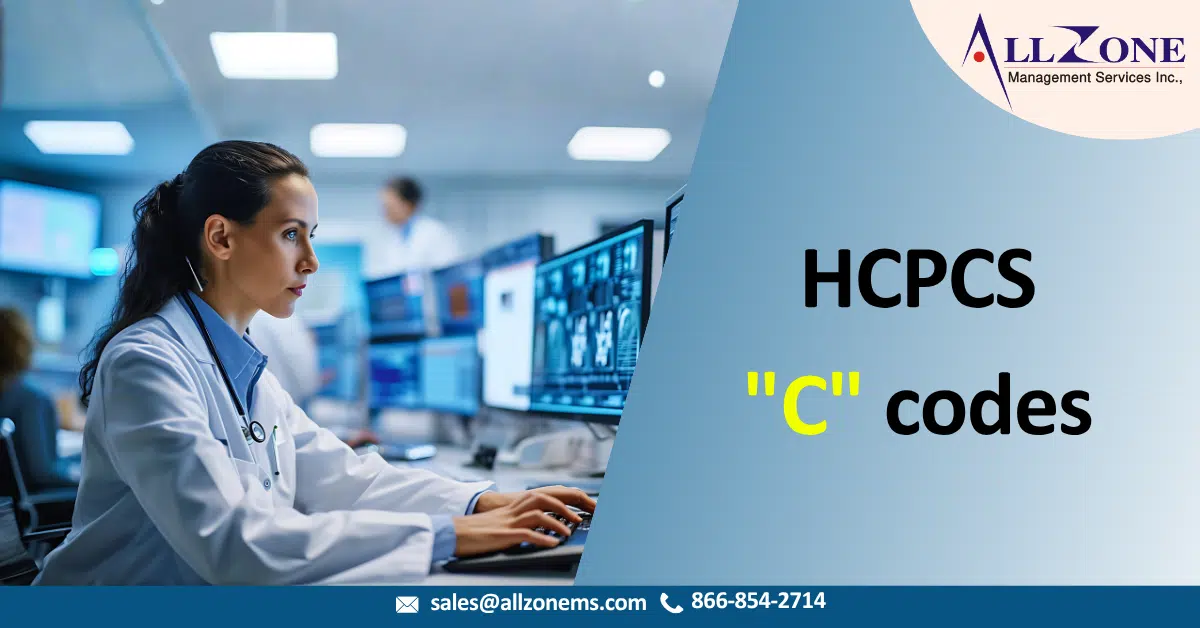The Healthcare Common Procedure Coding System (HCPCS) is a standardized coding system used primarily for billing and reporting medical services and supplies in the United States. Within HCPCS, C codes are a specific category of temporary codes used under the Hospital Outpatient Prospective Payment System (OPPS).
These codes are issued by the Centers for Medicare & Medicaid Services (CMS) to identify new medical services, procedures, and devices that do not yet have a permanent code. C codes are crucial for hospitals to receive timely reimbursement while new technologies or services are being evaluated. They ensure a standardized reporting method during this temporary period.
Purpose of HCPCS C Codes in OPPS
C codes were introduced to address the need for a flexible coding system that can quickly accommodate emerging treatments, drugs, and technologies in hospital outpatient settings. Their purposes include:
- Facilitating Reimbursement: Hospitals can bill Medicare for newly introduced services while a permanent CPT or HCPCS Level II code is being established.
- Tracking New Technologies: C codes allow CMS and hospitals to monitor utilization trends for new services.
- Maintaining Compliance: They ensure temporary coding aligns with OPPS regulations and payment policies.
- Supporting Revenue Cycle Management: By using C codes correctly, hospitals reduce the risk of claim denials and ensure accurate revenue reporting.
Structure of HCPCS C Codes
C codes are unique identifiers that begin with the letter “C” followed by four digits (e.g., C1713, C1842). Each code is linked to a specific service, supply, or device. Some key features include:
- Temporary Nature: These codes are not permanent and are often replaced by CPT or permanent HCPCS Level II codes once finalized.
- Assignment by CMS: CMS provides annual updates to C codes to reflect changes in medical technology and hospital services.
- OPPS Payment Status: Each C code comes with a designated payment status under OPPS, which helps determine the reimbursement rate.
Common Examples of HCPCS C Codes
While C codes are numerous and continuously updated, some examples include:
| C Code | Description | OPPS Status |
| C1713 | Implantable device for minimally invasive cardiac procedure | Paid separately |
| C1842 | Infusion pump used for chemotherapy administration | Bundled payment |
| C2624 | New surgical instrument for outpatient orthopedic procedure | Paid separately |
Note: Payment and coverage details are determined by CMS and may vary by year. Always check the most recent OPPS C code list before billing.
How to Report HCPCS C Codes in OPPS
Reporting C codes correctly is essential for accurate reimbursement and regulatory compliance. Hospitals and outpatient facilities should follow these steps:
- Verify the Code: Ensure the service or device has a valid C code issued by CMS for the reporting year.
- Use Appropriate Modifiers: Apply OPPS billing modifiers if necessary (e.g., -TC for technical component).
- Submit on UB-04 Form: Use the standard hospital billing form (UB-04) for outpatient claims.
- Check Payment Status: Determine if the code is paid separately or bundled within other services to avoid overbilling.
- Track Updates: CMS updates C codes annually, so billing teams must monitor changes to avoid claim denials.
Challenges with C Codes
Despite their benefits, C codes come with certain challenges:
- Frequent Changes: New codes are added while others are deleted or replaced, requiring continuous training for billing staff.
- Temporary Reimbursement Rates: Some C codes may have temporary payment rates that differ from permanent codes, leading to revenue cycle complexities.
- Complex Tracking: Hospitals must track usage, updates, and transitions to permanent codes for proper financial reporting.
Best Practices for C Code Management
To maximize efficiency and compliance with C codes under OPPS, hospitals should:
- Maintain an Updated Code List: Keep a current list of all active C codes and their payment statuses.
- Train Billing Staff: Regularly educate coders and billing professionals about temporary codes and their proper usage.
- Audit Claims Regularly: Conduct periodic audits to ensure C codes are used correctly and payment is accurate.
- Coordinate with Clinicians: Work closely with clinical teams to identify new services or devices requiring C code reporting.
- Use Technology: Implement revenue cycle management software to automatically integrate C code updates and reduce errors.
Conclusion
HCPCS C codes are an essential component of the Hospital Outpatient Prospective Payment System (OPPS), enabling hospitals to report and receive reimbursement for new services and technologies quickly and accurately. While temporary, they play a vital role in ensuring compliance, supporting revenue cycle management, and tracking emerging medical innovations.
For hospital billing professionals, understanding C code structure, proper reporting, updates, and challenges is critical for efficient claim processing. By staying informed and using best practices, healthcare providers can optimize revenue, reduce claim denials, and maintain compliance with CMS regulations.
HCPCS C codes are more than just temporary identifiers—they are a bridge to innovation in hospital outpatient care, ensuring that new treatments are accessible and properly reimbursed under Medicare guidelines.

